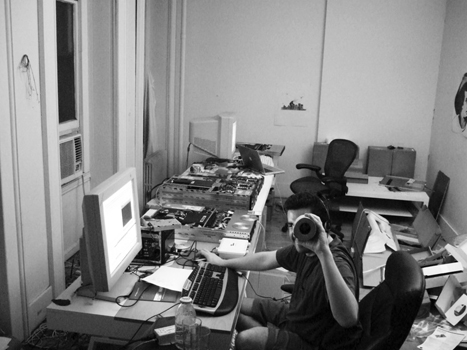How They Started (10 page)
Authors: David Lester

Although eBay’s foray into online auctions in China ultimately proved unsuccessful (it closed the website at the end of 2006 and instead entered into a joint venture with a Chinese company), eBay had more success with Skype. In 2007 Meg Whitman said that Skype had more customers in China than in the United States, and the growth rate in China was higher than anywhere else.
Fittingly for an Internet business, eBay has not been slow to capitalize on other technology opportunities, as it now offers a site enabled for mobile devices, text-message alerts and blogs. It has also further diversified its services to offer “Best of eBay,” a site dedicated to finding the most unusual items advertised, and “eBay Pulse,” which provides information on popular search terms and most-watched items.
More recently the company has branched out into other international markets and expanded its auctions business into event ticketing and comparison shopping, while navigating its fair share of challenges. The company has seen the overall growth of its core auction business slow down, and it has had to deal with numerous incidents of fraud carried out on the site. What’s more, eBay has faced intense competition from search engine giant Google, which in 2006 launched Checkout, its own online payment system. Amazon, too, has begun to attract independent sellers, the core of eBay’s business.
The company’s success has been credited in part to its ability to innovate as well as to adapt.

The inside of eBay’s headquarters.
Where are they now?
As of 2011, eBay had around 100 million active users globally. Its three biggest markets are the US, the UK and Germany. In
Forbes
’s 2010 list of the world’s billionaires, Pierre Omidyar was listed at number 148 with personal wealth of around $5.2 billion. He remains chairman of eBay but has kept himself busy with other ventures, such as Omidyar Network, a philanthropic investment firm.
In April 2008, Meg Whitman stepped down as CEO (and in 2010 ran unsuccessfully for governor of California). She was succeeded by John Donahoe, president of eBay’s Marketplaces division, who remains CEO today.
In 2009, eBay sold 70 percent of its share of Skype for $2 billion (having paid $2.6 billion for the online communications company in 2006). But in 2011 Microsoft acquired Skype for a massive $8.5 billion, valuing eBay’s 30 percent share at $2.8 billion.
The full-year 2011 revenues showed an increase of 27 percent on 2010 levels to $11.7 billion. The company generated net income of $3.2 billion. PayPal also saw significant rise in revenue, with a 28 percent year-on-year revenue increase to $4.4 billion, with the payments provider adding a million new accounts every month in 2011.
The company’s success has been credited in part to its ability to innovate as well as to adapt, a vision that has been with the company since the very beginning, and that continues to hold true today. The site introduced new measures to make its auctions and fixed-price listings easier to use, revamped its feedback mechanisms and strengthened its anti-fraud provisions in a bid to make eBay a safer place in which to trade. As Pierre explained in an interview in 2000:
“What eBay did was create a new market, one that wasn’t really there before. We’ve had to evolve our strategies and policies from what I built in the beginning, which was a self-policing community of people, to one where we take a more active role in trying to help identify the bad actors”, he said.

A handcrafted success
Founders:
Rob Kalin (shown), Chris Maguire, Haim Schoppik and Jared Tarbell
Age of founders:
All early to mid 20s
Background:
New York University (Rob, Chris and Haim), New Mexico State University (Jared)
Founded in:
2005
Headquarters:
Brooklyn, New York
Business type:
Online marketplace for independent creative businesses

In 2005, Rob Kalin was a 25-year-old college student
, carpenter, photographer and painter looking for a good way to sell his wares. He would join with two other friends at New York University to create exactly that: an online marketplace for handcrafted goods. He gave it a short, nonsensical name: Etsy.
From a website cobbled together in just a few months in Rob’s Brooklyn apartment, Etsy would grow in five years to move more than $300 million in merchandise, be valued at more than $300 million by investors, and employ more than 250 people.
The ironic secret of Etsy’s success? Rob put more energy into helping the crafter community and promoting the lifestyle of buying handmade goods than he did into making Etsy a viable business. That philosophy would cause much conflict and turmoil at the company, but would also draw an enthusiastic user base and enable Etsy to succeed.
“Profit isn’t a focus,” he said flatly in a 2010 video interview with the influential technology blog
TechCrunch
. “To me, the most important part of commerce is the social aspect. This is a huge opportunity to reinvent what e-commerce means. That’s our goal.”
In 2005, Rob and his friend Chris Maguire were hungry New York University students doing freelance Web-development work to try to cover their tuition. Chris was just 21. The pair formed a design company, iospace, but quickly tired of client work and wanted to create their own online business. The question was what it would do.
Rob’s time at NYU overlapped only briefly with Haim Schoppik’s, but the two had something in common besides NYU: both were high school dropouts. Boyish, redheaded Rob had basically flunked out of high school—he had a 1.7 grade point average—and then bounced through six different colleges before landing at NYU. He only made it into the school through subterfuge, faking a student ID at MIT and then using a recommendation letter from an MIT professor he’d met to gain admission.
For his part, Haim dropped out of high school at 16 to pursue his first love, computer programming. After a couple of years in the workforce, including stints as a site administrator for Goldman Sachs and Reuters, Haim went back to school. All three were students at NYU’s Gallatin School of Individualized Study, where students create their own majors.
Entrepreneurial ideas seemed to grow in Rob’s head like weeds, Haim recalls, though many were of dubious value, such as opening a photo-scanning store. One early idea of Rob’s was to create an online community productivity software application. He even wangled $10,000 in financing to develop the idea, from a local realtor for whom Rob had built a home bar, Spencer Ain.
“Rob’s hidden ability is talking rich people out of their money,” Chris says. “That’s what he’s best at.”
Unfortunately, the concept floundered shortly after Rob got the money. The pair needed another website idea that could justify the investment money they were quickly spending.
“To me, the most important part of commerce is the social aspect. This is a huge opportunity to reinvent what e-commerce means.”
The turning point proved to be the duo’s pro bono revamp of a crafters’ chat-forum site, GetCrafty.com, which was owned by an NYU professor’s wife, Jean Railla. The project gave Chris and Rob the chance to work on community forum software. More importantly, they had a chance to chat with many of the site’s members online.
“People kept saying they wished they had a better place online to sell their stuff,” Chris says. “eBay was too big, too expensive, and too ugly for what they wanted. And we were like, ‘There’s an idea. We could build that.’”
The idea of a crafters’ e-commerce website caught Haim’s interest. At 25, Haim was the most seasoned worker of the group, bringing needed site administration and design experience to the project. The trio soon converged on Rob’s Brooklyn apartment, which became the designated launchpad for the site.
“eBay was too big, too expensive, and too ugly for what they wanted. And we were like, ‘There’s an idea. We could build that.’”
The apartment had several bedrooms, but Rob’s roommates had departed, leaving just Rob and his three pet cats. Chris and Haim would rarely make it back to their own homes over the next few months as they worked frantically to build the as-yet-unnamed website.
“We literally lived there,” recalls Haim. “There are unflattering pictures of me asleep with my mouth open, drooling. We’d wake up and go to work and work until we crashed.”
As the team built frantically and ran through its capital, the question quickly became how much site to build before launch. Rob was taking counsel from his grandfather, who had worked at both IBM and GE. He advised the trio to wait until they had a full-featured website and a solid business plan.

Haim working away in their first “office,” Rob’s apartment.
But Rob was also talking to a friend from his Brooklyn neighborhood, restaurateur Sean Meenan, who had created several successful eateries including popular Café Habana. The two had cemented their relationship when Rob built Sean a cool computer made of orange plexiglass for an Internet café. He liked Rob’s hustle: before the site’s launch, he noticed Rob out distributing flyers about the site at a Brooklyn craft fair.
Sean had the opposite opinion from Rob’s grandpa: launch as soon as you possibly can, and add more features later. This latter theory won out, and a fairly bare-bones version of the site would launch after nearly three months of work, in June 2005.
During this frenetic period, Rob was also out raising more money. He returned to realtor Ain for more funding, who also brought in his brother, Judson Ain. Sean was the third investor in the startup’s $315,000 seed-funding round.
Why would Sean write a 25-year-old, first-time entrepreneur a six-figure check for an as-yet-unlaunched e-commerce website?
“I was a big believer in Rob,” he says. “He has a unique perspective and he’s really smart. And there was something really sincere, innocent and hopeful about this project.”